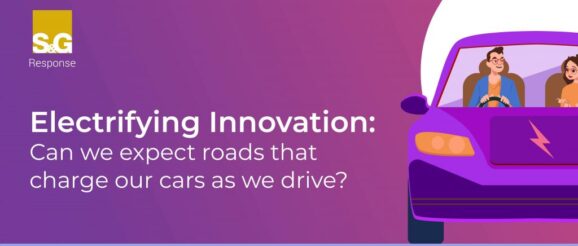Electrifying Innovation: Can we expect roads that charge our cars as we drive?

In recent years, the world has witnessed a surge in the adoption of
electric vehicles as a cleaner and more sustainable mode of transport. However,
even with EVs becoming more popular than ever and technology being as advanced
as it is, EV owners are still facing some challenges, one of which is the
availability of charging points while on long journeys.
Local driving with an EV is a breeze as you know you can rely on your
home charging point to get more juice when you need it, but if you’re planning
a journey that’s more than 250 miles, you’ll need to plan when and where to
charge your vehicle en route and this is sometimes easier said than done.
The problem with charging points
Although there are 35,000 EV charging points in the UK, not
all of them actually work and many internal EV charging point locators will
direct you to charging points which are out of action. In fact, according to a
survey by Which?, 75% of EV users are ‘dissatisfied with the
charging infrastructure.’
Another common issue is the wait time to charge your vehicle. The very
minimum amount of time people generally spend charging their electric car is
about 30 minutes, but EVs can take hours to reach full charge. This is not
ideal at a charging station with only a few chargers and a whole lot of flat
batteries. The government will be upping the amount of charging points across
the UK, but for the time being, getting a full charge while on the road can
still have its challenges.
So, what’s the plan?
Obviously adding more charging points across the country will be a huge
help to EV owners, but there are some alternative options being explored by
researchers including electric roads.
The idea of electric roads involves embedding charging infrastructure
directly into the road surface, allowing EVs to charge their batteries while
driving. The concept is like wireless charging points used for phones and
tablets, but on a much larger scale. As EVs travel along these specially
equipped roads, they can draw power from the infrastructure, thereby extending
their driving range and eliminating the need for frequent stops at charging
stations.
“The basic premise for electric roads is incredibly simple; the road
infrastructure is responsible for supplying electricity to all vehicles using
the road at any one time. Typically, this is achieved via either overhead or
underground power lines, which transfer power directly to vehicles via
inductive coils, or conductive rails,” explains Fuel Card Services. Countries such as South Korea and Sweden
already have a form of charging roads in place, with expansion plans set for
the next few years.
What are the pros and cons?
Although it’s hard to see a downside (especially if you own an EV) there
are always two sides to everything.
The list of pros is extensive and includes seamless charging for EV
users, increased range and efficiency, reduced infrastructure requirements for
charging stations, and generally great environmental benefits. So, what are
some of the potential cons?
Implementing electric roads on a large scale would require significant
infrastructure upgrades, which can be pricey and the transition from conventional
could take some serious planning and coordination.
Not necessarily a con, but safety and maintenance would need to be a big
consideration. Electric roads need to be designed with safety in mind and
strict measures would have to be taken to prevent accidental contact with the
charging infrastructure. Regular maintenance and inspection would also be
required to ensure optimal performance and longevity.
Will it happen and when?
Potentially yes, but not any time soon. There’s still a long way to go
in the world of EVs, and although sales are soaring, we’re still a way from making
massive infrastructural changes such as electric roads to get across the
country. So until the E-highways are here, make sure you’ve got enough charge
to get home!
The post Electrifying Innovation: Can we expect roads that charge our cars as we drive? appeared first on S&G Response.
